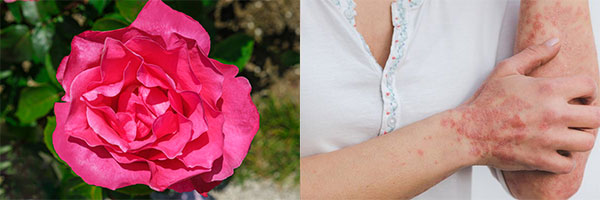20 Nov

909 Views
Important Information About Rose Disease
Rose disease is a chronic skin condition that most commonly affects the face. It is often confused with acne, eczema and skin allergies and can worsen over time if left untreated. It is more common, especially in fair-skinned people. The causes of this disease are not fully known and there is no cure. There are only ways to alleviate the symptoms. The main symptom of the disease is the development of facial pustules. There is also redness and inflamed blood vessels.
There is no clinical test for rosacea. When the patient's skin is examined during the doctor's controls, this diagnosis can be reached after asking about the symptoms and triggering factors. The most important distinguishing factor in diagnosing rosacea is that the doctor sees the presence of enlarged blood vessels. The signs and symptoms of rosacea are mostly in the face area. Early diagnosis is very important in rose disease, as it is in every disease. It is important to learn about this situation early, especially for treatment. If the doctor suspects a medical condition or disease such as lupus (SLE), they may order blood tests. If such situations occur, the doctor may refer the patient to a dermatologist.
IMPORTANT NOTE: It is important to pay attention to the medication, cream and lifestyle your doctor will give you. Along with topical medications to be applied to the skin, oral antibiotics and eye drops for eye symptoms can be used. Please do not use any medication other than the ones your doctor gave you. In this disease, the effect of genetic inheritance from family in general is great.
Laser therapy can be applied in this disease. This treatment method is used in people with visible blood vessels (telangiectasia) to shrink these vessels. It should definitely be done by a specialist dermatologist. It can cause pain, but most people complete the treatment without the need for anesthesia. Some people may experience bruising, skin crusting, swelling and tenderness after treatment. These situations pass within a week or two. However, if it has caused an infection, antibiotic treatment may be required.
There are four main types of rosacea;
-Erythema Telangieczatic Rose Disease: It is the type with visible blood vessels and redness.
-Papulopustular Rose Disease: It is a type of acne-like redness and swelling.
-Phymatous Rose Disease: It is the type that causes the skin to thicken and form a bumpy texture.
-Ocular Rose Disease: It is the type that causes redness and irritation in the eyes and swollen eyelids.
For rosacea, certain factors can exacerbate the disease or make it worse by increasing blood flow to the surface of the skin. For example; extreme temperature, sunlight, humidity, wind, stress, anxiety, anger, embarrassment, sauna and hot bath, cold, cough, fever, some cosmetic-skin-hair care products, high blood pressure and drugs used together with it can be triggers. In this disease, dairy products, spicy foods (hot sauce, chili peppers, etc.), caffeine, chocolate, tomatoes, citrus fruits, wine, hard liquor, hot foods and beverages can trigger symptoms.
Although it has not been definitively proven for rosacea, eating prebiotic and probiotic-rich foods supports the treatment positively due to its anti-inflammatory properties. People diagnosed with this disease should be protected from high temperatures, hot foods and direct sunlight.
We wish you healthy days…



Leave a Comment